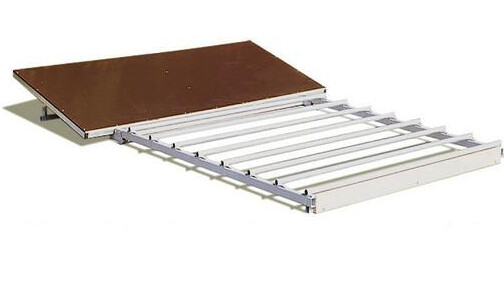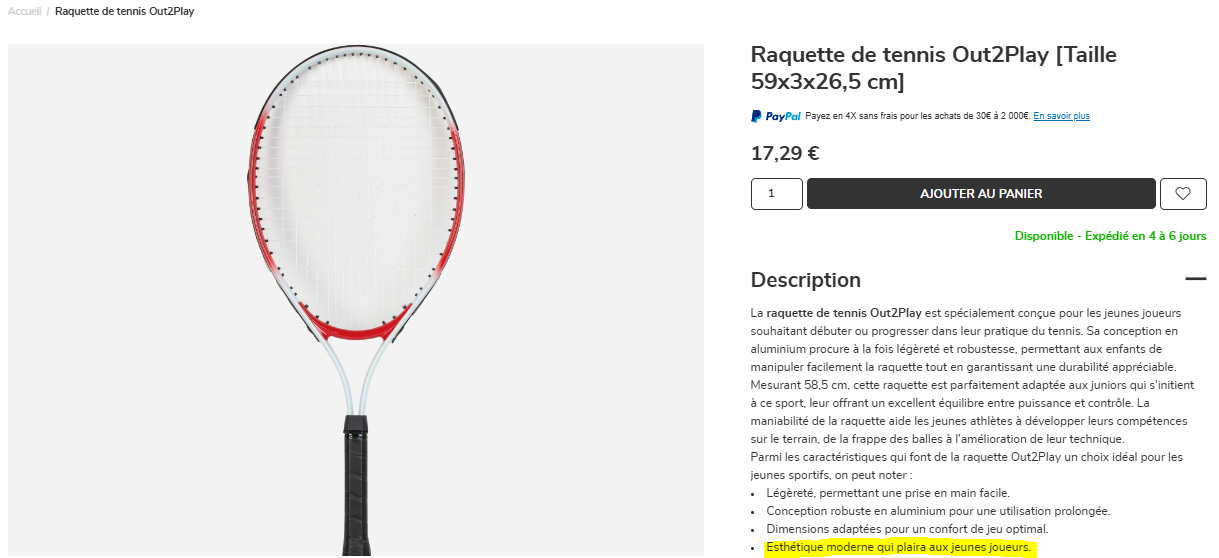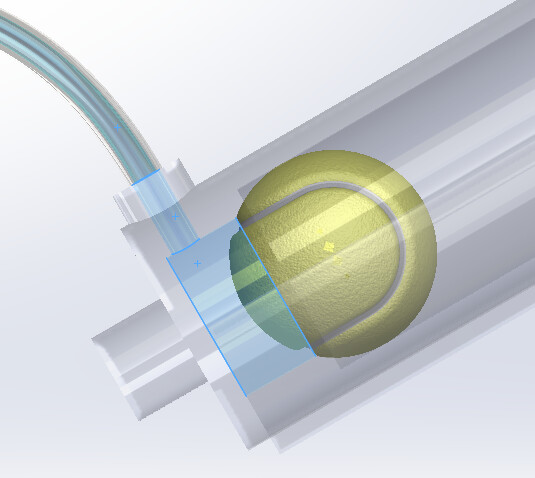The best thing to do is to make one for yourself quickly.
And you make us a video presentation of the result with the dog ![]() of course
of course
There is the wind of the globes ![]()
Nice pun but since when has the Vendée been in Brittany? ![]()
Be careful, the Breton is touchy, well he's Breton what ![]()
Hi all ![]()
ChatGPT's answer to @Scofield about the movement of the bullet after exiting the tube is sketchy but acceptable: 20 m is indeed the order of magnitude of the range for an initial velocity of 14 m/s and a departure angle of 45°. The pneumatic power evaluated is coarser and less interesting...
As for the Excel simulation and an ejection speed of 312 m/s, we are in the realm of a firearm.

The main difficulty of the ball launcher is the estimation of the speed that the ball can reach as it travels through the tube.
The air flow from the tank to the tube depends on the upstream pressure, but also on the shape and cross-section of the passage through the valve, the length of the pipe, etc. There is also a big influence on the opening time of the valve, during which the passage section varies from 0 to its maximum value, with the consequence of a relatively slow increase in air flow.
The other aspect of the problem is the increase in pressure in the tube, which itself depends on the movement of the ball (mass, cross-section), the clearance and the friction between the ball and the tube. And why not air resistance.
The length of the tube will also have an influence, in connection with the flow: there is no need to put a long length if the tank cannot handle the flow.
I tried a simulation with data that seems realistic to me, on a physical basis: airflow through an orifice and PFD applied to the ball. Some results are in the attached document.
Basically: 17 m/s exit speed and 27 m range.
How much confidence can we place in a simulation of this type? In my opinion, none. ![]()
![]()
The pb is to know if it is a good reflection of reality, which will only be validated after manufacturing a prototype and testing.
Although the results cannot be guaranteed, it is possible to identify the influence of certain parameters.
In particular the valve: under the same simulation conditions, by only increasing the opening time from 0.1 s to 0.05 s, the ejection speed increases from 17 to 22.8 m/s.
You have to find a valve with a " punch " type opening...
LanceurBalles.docx (155.4 KB)
Since we see the Breton flag everywhere in France ![]()
true, so much for me
Concerning the baballator, don't forget that a ba-ball is not lead; it bounces back and keeps its inertia longer. A high shooting angle will make the ball bounce higher but not as far, a 45° angle will be optimal to increase the range with a lower speed but the ball may end up behind the fence, an angle too low may blind the dog.
No, the " Gwen ha du " is universal and can be found all over the world, long live the " Breizh Power "!! ![]()
![]()
![]()
Some even say that the 1st photos on the moon were redone in the studio.

The original image, no doubt, showed a Gwen ha du!
" Baballator " I take! Not too much risk on this side the goal is to shoot at an angle of 30) max so that the dog catches it at the 1st or 2nd bounce max, when my 4-legged rocket passes.
The " Baballator " is to be used to jump an obstacle in lg.

If the dog is good at blowing and jumping correctly, we are rewarded.
And the speed of the Baballator helps to give speed upstream since the dog will quickly understand that he has to push to catch the ball quickly.
The pitch is lawn so the bounce is very reduced. And yes, in Brittany the lawn remains green!

Simple, effective... And you keep your money to pay a blow to your " colleagues ".
Hervé
Thank you @m_blt this comforts me in the choice of tank (important enough) and also in the distances estimated at the pifometer 20-30-40m max with pressure of 4 to 10 bars max (probably 4-8 bars max)
For the quick opening of the valve I was hesitant to try a cheap aliexpress valve (air or water solenoid valve at 10 bar max), but no opening time indicated and unlikely to have something as fast as 0.1s!
Another solution is a manual valve with a tyre cylinder fed by a tap on the tank and the cylinder is triggered by radio remote control.
And as indicated, all I have to do is buy and manufacture!
The " colleagues " of work imposed by the management, are not really colleagues dear Mr. SAOUT! ![]()
![]()
![]()
For snowshoeing, I'd think about it when I'm lying on my lounge chair with a beer watching my dog jump!
And the goal is for the launcher to be hidden (not visible) unlike a racket in the hand!
A motorized axis and a motion detector, and at night you can even scare away intruders. You just have to calibrate high enough so as not to bump into the cat or a hedgehog.
Assumptions:
In the barrel, adiabatic trigger until the barrel comes out of the bullet.
We know P1, V1 and V2 (V2=V1+Volume of the gun chamber which is
depending on the diameter of the bullet and the length of the barrel)
The trigger is adiabatic
so P2=P1(V/V2)^gamma
Then W=(P2 V2-P1 V1)/(1-gamma)=0.5mV^2
Which gives at the exit of the barrel V of the bullet 220m/s for a length
0.6m gun
Another ladle estimate is Constant pressure in the barrel=8b
F=SP=macceleration
at constant acceleration we know the duration of the throw:
cannon=0.5acct^2
And the output velocity =acc*t=240m/s
After that, the ball is only subjected to its weight and the
drag=0.5rhoSCxV^2=0.00113*V^2
With a Cd of 0.55 according to the AI.
After that, you have to proceed in a short period of time
m*acceleration=Drag+Weight and m(V(t+dt)-V(t))=F which allows you to
determine V(t+dt) as a function of V(t) and F itself as a function of
V(t). And knowing all the V(t) you can deduce the coordinates of the
ball by Position(t+dt)-Position(t)=V(t) and you stop the iteration
when the Height of the Position=0...
On this scale, it's " Breizh Zèle "!
excellent!!!
Hello
10 days later, the project may already be blown away by the wind...
To meet the initial request, I wrote an Excel macro that simulates the physical aspect of the ball launcher.
All you have to do is copy the two files (xlsm and pdf) into the same folder, and open the Excel workbook. One click on the button with image and the macro runs. As a rule...
I haven't found anything to simulate the dog yet...
LanceurBalles.zip (686.5 KB)
No, it's still relevant, I'm waiting for my few purchases to start manufacturing.
And I would not fail to come back here and choose the most realistic solution.
Thank you @m_blt for your proposal that I will study now.
Edit: top macro for a complete answer, it's a complete answer!
Quick question, what does the dead volume of the tube refer to (an empty chamber where the air accumulates before pushing the ball?)
Do you have to put one on?
I imagined putting the valve at the outlet of the bottle thanks to an adapter M16x1 and G3/4", then at the outlet of the valve directly the barrel with 3/4" G then cone up to the Ø of the bullet and straight barrel.
I see that this changes the range a lot depending on the opening time of the valve (+ long opening does not mean + long distance)
the length of the canine (good to know, I would make sure to be able to put extensions on him for the test!)
And of course according to the dead volume (hence the question!)
From the point of view of simulation, one of the laws of behavior expresses the relationship between pressure and volume:
p(t) V(t) = p0 V0
which allows us to calculate p(t) = P0 V0 / V(t)
At the first calculation step, the only volume V(t) known is V0. If V0 is zero, there is a division by 0 which causes the calculation to crash. It would have been easy to get around the problem by a test, with a different expression in this first step: p(t) = p0.
But as is often the case: no safeguards...
And then in real life, there is necessarily a dead volume at the back of the ball, however small it may be (pipe, cone considered at the bottom of the tube...). In blue on the illustration below.
Even if it is probably in your interest to reduce V0 for a faster build-up of pressure.

The two parameters of opening time and tube length are linked in the search for an optimal ejection speed. One possible approach is to simulate with a long tube (3000 mm), to see that the speed goes through a maximum, then decreases.
It is the position of the bale at this maximum speed value that determines the optimal length of the tube. Beyond that, the supply by air to the tank no longer follows...
Result: tube of about 2000 mm with the other default settings!
High speed certainly, but with a pressure drop in the tank of nearly 1.5 bar. The autonomy of the tank will be two casts, a third weak, and back to the pump...
All this with the question of the validity of the simulation and its parameters...